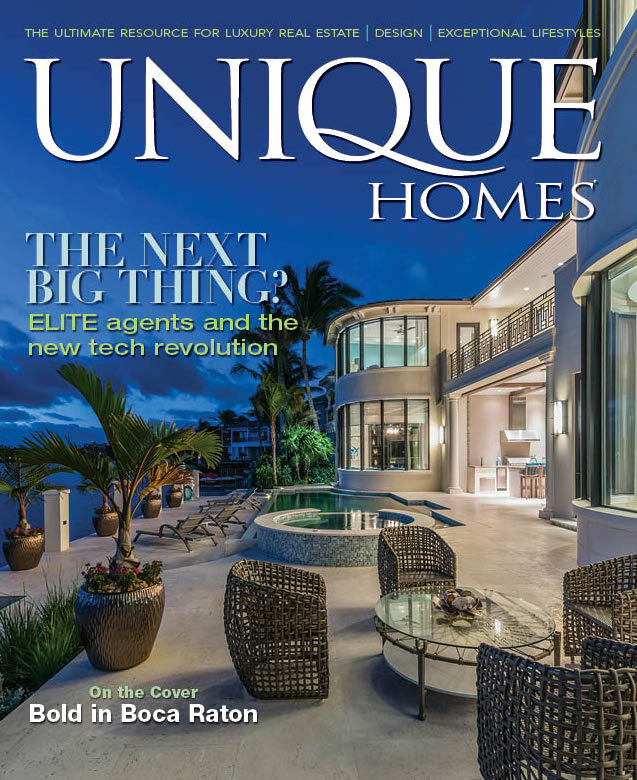For decades, the flying car has been an expectation of the future. Now the Switchblade is turning this vision into a reality. The Italian-inspired, three-wheeled, carbon-fiber flying car is a high-performance vehicle both on the ground and in the air.
By Alyssa Gautieri

Sam Bousfield, the founder and creator of the Switchblade, equivocates the dynamic vehicle with a time machine. “When you have the capability to fly and drive in the same vehicle at any point on your trip, it opens up all kinds of avenues and places that you could go,” he says. “You can get somewhere so much faster and save tremendous amounts of time.”
Bousfield, who first came up with the idea for the Switchblade in 2007, wanted to make flying more useful and to transform flight into an everyday, trouble-free activity. “[The Switchblade] reduces all the worry
involved with travel,” he says. “It makes everything much easier. There are two systems and you can use one or the other, whichever is the best for where you’re going when you’re going.”
The Switchblade is named after its retractable wings, which swing out from beneath the vehicle like the blade of a pocket knife. Designed with convenience in mind, this automated transition from automobile to aircraft takes only 45 seconds.
Samson Motors of Central Oregon, creators of the Switchblade, designed and redesigned the vehicle to ensure a balance between luxurious aesthetics and function. “We have raised the form, the art of the Switchblade, as high as we could in quality but not past the point where it interferes with the function,” Bousfield says of the decade-long process.

Photos courtesy of Samson Motors, Inc.
While many vertical take-off and landing attempts require new infrastructure, the Switchblade combines the use of current road and airport systems. “The system that we are using is very freeing and enabling,” Bousfield says. “I see [the Switchblade] as a transforming element in society because it allows such greater freedom in personal and business travel.”
The dynamic vehicle can travel through the air at over 200 miles per hour because of its aerodynamic shape. On the ground, the vehicle is capable of significant speed as well. “We will have fun investigating just how fast that is,” Bousfield says of the vehicle’s potential speed. “We have already exceeded 100 miles per hour with our full size, full weight ground prototype.”
Designed with speed in mind, a ground prototype out-performed a Jaguar XK8 in head-to-head acceleration testing. The Switchblade, which is expected to make its first public flight in the spring, also has the power-to-weight ratio of a 2017 Corvette.
Bousfield believes the Switchblade will change the way in which people travel. “Flying should become something not to be feared,” he says. “I hope that more and more people begin to visualize themselves being able to fly. I do see that in the future, more people will.”
Samson Motors hopes to begin deliveries of the Switchblade by the end of 2018. The base model will sell for $140,000, while custom-designed versions will begin at $500,000.

2018 Winners in Six Categories Announced at Private Dinner at Beverly Hills Home
Founded in Europe in 2010 by Jean-Christophe Chopin (architect of E-Trade Europe), the BORN Awards, which celebrate creative achievements across multiple categories of the design-led lifestyle, landed on American shores. The BORNS are the first U.S.-based regional competition recognizing work that strives to enhance people’s lives through aesthetics and functionality. All of the winners, both emerging and established men and women, invented something beautiful and carried their visions to society.
Operating in six countries, the BORN Awards are the premier platform for honoring and empowering artists while providing exposure to some of the world’s most influential retailers, brands and industry professionals. The winners from each region, now including the U.S., are invited to present their creations during an exclusive exhibition at Milan Design Week each year, and to participate in The BORN Conversations, an exclusive series of fireside chats held with renowned thought-leaders about the intersection of creativity and business. Once all of the regional winners are selected, they will go on to compete against one another in the global final held in London each year.
The theme of the 2018 competition is “Peerless,” which aims to elevate singular creations that combine functionality and aesthetics in one of six categories: Architecture, Technology, Home, Leisure, Sport and Mobility. Additionally, The BORN Awards partnered with two industry leaders to bestow special prizes – Tastemade, a global, digital food, home and travel network, will award the best in “Food + Design,” while Machinima, a leading gaming platform, will select the best in “Immersive Storytelling + Narrative Design In Gaming.”

The 2018 BORN Award Winners are:
Architecture & Design: Jacques Garcia and Sydell Group, NoMad Hotel, Los Angeles
Technology & Innovation: Scott Painter, CEO & Founder, Fair.com
Home: Noah Kaplan, Lena Sound Sculpture by LEON Speakers
Sports: RabbitsFoot Surfboard, Ryan Lovelace based on an original idea by Dan Malloy
Leisure: Ryan & Adam Goldston, Athletic Propulsion Labs
Mobility: Stuart Parr,, MV AUGUSTA
Tastemade Prize For Food + Design: Jeni Britton Bauer, Jeni’s Splendid Ice Creams
Machinima Prize For Immersive Storytelling + Narrative Design In Gaming: Guerrilla Games, Horizon Zero Dawn
Photos courtesy of EM50 Communications
When technology experts compare the current pace of innovation behind the scenes in real estate to the Dot.com Boom of the late 1990s, it’s time to take notice.
By Camilla McLaughlin

Could another tech revolution for real estate be at hand? During the last tech surge, more than a few pundits speculated the agent would become increasingly irrelevant as technology took over most aspects of the job. Today, amid speculation about blockchain, artificial intelligence and other emerging technologies, whispers about the demise of the agent are once again surfacing. But experts say today’s next-gen tech will only make the role of the agent more relevant, particularly in high-value markets.
“Ultimately, relationships remain at the core of real estate, and today they are more important than ever,” observes Stephanie Anton, executive vice president of Luxury Portfolio International.
While attention in recent years has riveted on technology for the home, a wave of innovation with the potential to be even more transformative is on the cusp of altering everything from the way homes are marketed, to access to property data, to the execution of the sale. “We are at the tipping point of change
for real estate. Within three to five years, the entire property landscape will have shifted. Real estate search will be completely remastered, and the industry as a whole will not resemble what it is today,” says Joel Leslie, partner and CEO of Propify, a California startup that was developed in Australia.
The time frame for Leslie’s projection might be optimistic, but there is no doubt that the way properties are bought and sold will change in the not too distant future, perhaps even more dramatically than the mid-1990s when listings and property information became publicly available and searchable online. As a result, new brokerage models emerged; some remain, many do not — but the impact of technology on the way homes are bought and sold endures.
“Technology continues to transform the real estate industry, and particularly in the last few years as we have seen more and more true innovation introduced that can make agents’ lives more efficient, their tasks more automated and their time more effective,” says Stephanie Anton.
“An ever-complex sales process, record home values and elevated consumer expectations require agents to rely on a range of tools from contact management to virtual reality. “In the world we live in today, you truly have to be rigorous to keep up with the ‘latest and greatest,’” shares Anton.
Luxury sellers want “to see that an agent has the tools and wherewithal to expose their home to the buyer groups that have the most potential to purchase. They want to know that it’s being placed in the right places, where luxury buyers are looking. They also want to easily see the work that the agent is doing on their behalf,” says Tom Morgan, who heads up marketing for Gabriels Technology Solutions, a technology provider for luxury real estate brands. Productive agents rely on CRM or customer relationship management software to facilitate and streamline this process and provide detailed reports to clients.
Contacting an agent and discussing parameters of the home used to be the norm when someone decided to buy a home, says Bob Hurwitz, founder and CEO of Hurwitz James Company. Now, that initial contact usually happens after the buyer has done his or her own research on everything from available homes for sale to neighborhood statistics to online value approximations.
“The agent is still absolutely key though, as much of the information online, particularly ‘valuations’ from third-party aggregators, are ludicrous and inaccurate, based on incomplete or faulty data. Additionally, much sales data is not available as more and more listings are sold off market,” says Hurwitz.
Online searches, often on mobile devices, have upped requirements for how properties are presented online. “The days when a photographer would come in and shoot 20 photos are over. It is imperative that photography, VR [virtual reality] tours and video be absolutely of the highest level,” Hurwitz says. To take a unique property to the next level and make the property stand out, Hurwitz has hired an award-winning director to produce visuals.
Disruptive Technologies
When Matterport introduced 3-D technology to real estate imagery, it was a game changer. Once floorplans came off the page, it was possible to get a much better sense of the configuration of a property, and 3-D floorplans invite exploration. Now, pioneering newcomers are making 3-D technology less expensive and possibly applicable to a range of price points. “Apple investments suggest that soon, with the iPhone 11, you will be able to create such beautiful content using a camera in your pocket,” says Anton Yakubenko, co-founder and CEO of GeoCV.
GeoCV offers a high-quality 3-D immersive experience in both tours and floorplans. There is a “true sense of being with realistic depth and HDR [high-dynamic range] photo realistic quality,” explains Jonathan Klein, director of partnerships for GeoCV. “We differentiate ourselves by leveraging 3-D-enabled smartphones and taking an open approach to the data.” GeoCV’s floorplans and tours also include patios, porches and other outdoor connections, giving potential buyers a good idea of the indoor-outdoor synergy of a property.
“Technology continues to transform the real estate industry, and particularly in the last few years as we have seen more and more true innovation introduced that can make agents’ lives more efficient, their tasks more automated and their time more effective.” — Stephanie Anton of Luxury Portfolio International.
It’s A Virtual World
Virtual staging is not new. It was introduced in 2009, but the overall result was less than realistic. New technology means virtually staged spaces appear as real furnished rooms. “With dynamic 3-D augmented and virtual reality capability, buyers, sellers and real estate agents can eliminate visualization barriers using technology to showcase how a space will look fully furnished, but in a more scalable, convenient, cost-effective and personalized way than ever before,” says Pieter Aarts, CEO of RoOomy.
Virtual staging does more than act as a substitute for real furnishings. Some options allow viewers to change the position of a wall or windows. So, buyers can imagine how a property would look if, for example, the landscaping was changed or with a wall knocked out, explains Tim Rose, national sales manager for PlanOMatic, which offers virtual staging, interactive floor plans and 3-D walkthrough.
By collaborating with retailers of home furnishings, RoOomy gives potential owners a preview of what a room would look like with their choice of furniture. Using a design app on their site, buyers and homeowners can also try out various pieces of furniture or an entire scheme in a room, and the results are presented in 3-D. RoOomy also found a place on Architectural Digest’s list of the 20 best home design and decorating apps.
“Suddenly, virtual reality is making it possible for people to visualize a home before it’s built,” says Alexander Hovnanian, area president for K. Hovnanian at Port Imperial Urban Renewal VI, LLC. K. Hovnanian is innovating the way new construction is sold using virtual reality. Buyers tour Nine on the Hudson, a new project in West New York, New Jersey, while the 278-unit condo building is being constructed. Donning VR goggles they can walk the building and preview their future home as well as the views and patios and decks. Distant buyers use their iPad to link to an Opto tour using goggles supplied by K. Hovnanian. So far, the tours have resulted in more than 80 signed contacts from as far away as California.
What didn’t change dramatically during the tech revolution is the way property searches, which typically still require a specific location or geographic area as a delineator, are conducted. A few brands that cater to the affluent, such as Sotheby’s, allow a search by lifestyle, architecture or amenity without restrictions to a specific location.
Future searches for real estate potentially will bypass conventional portals and give access to an even larger number of properties — despite whether they are listed in the MLS — as blockchain technology becomes more widely adopted. Propify is a new social media search platform for real estate that employs blockchain technology. “The future of tech and real estate will make it easier to find the right property and Realtor and broker no matter where you are located. This will happen quickly and with confidence. There is no doubt that the traditional property search websites will not disappear overnight, but they will not be as aggressive as they once were,” says Leslie, who says the social media aspect of Propify has the most appeal for agents right now.
Blockchain and Distributed Ledger
Seemingly bursting on the scene in the last year, blockchain technology was originally developed as a platform for Bitcoin. But blockchain is applicable for many other uses, and is not to be confused with cryptocurrencies. “Blockchain technology is a digitized way to immutably record and share information. Blockchain-based smart contracts have the potential to transform real estate purchases, sales, leasing, financing and management,” says Marci Rossell, chief economist for LeadingRE and Luxury Portfolio. “Fortunately, the average person doesn’t have to grasp the technological details of how blockchain works; they just need to know what it can do for them.”
Some speculate that blockchain could be as transformative as the Internet was. Rossell compares the current climate to the Dot.com Boom of the late 1990s. “Blockchain is in the early stages of its commercial development and application. I expect that, over the next decade, it will be another Internet Wild West out there, with blockchain-related businesses emerging at a rapid rate. And just like the Dot.com Boom, a few will survive, thrive and transform their sectors — like Amazon. But there will also be many lost fortunes on the ideas that don’t work out,” she says.
Several blockchain platforms for real estate have been introduced, including Ubitquity and Propy.

Cryptocurrency Hubbub
Recently, Canter Companies, a San Diego brokerage, listed two properties offering the option of payment in cryptocurrency. Outlining the steps that had to be navigated, including banks and title companies, just to make this offering, CEO Andrew Canter says it was a detailed, but possible, process. Still, he cautions, “It’s early days. It’s something that is evolving every week.”
“Cryptocurrency is really a fascinating addition to the real estate industry,” says Hurwitz, who notes one of his agents just closed a $4.6 million transaction where the down payment was in Bitcoin. “It’s something that would have been unfathomable not too long ago,” he says. “What made it more challenging is that the buyer was actually obtaining a loan and it was necessary to find a sophisticated lender who understood the concept and was able to fund without a problem.”
The appeal of cryptocurrencies for global buyers should not be discounted since they potentially offer the ability to move currencies more securely and with fewer fees. Smart contracts and transactions via blockchain are expected to have appeal in countries where the sales process and property rights are not as secure as in the U.S.
Even though cryptocurrencies are not something most agents will encounter any time soon, major real estate brands and affiliate groups are keeping them on their radar. “Whether you’re skeptical of it or not, it is huge. We have thousands of new millionaires, and there are some new billionaires out there, purely off cryptocurrency. So, it’s something you’ve got to pay attention to,” says Danny Hertzberg with The Jills team at Coldwell Banker Residential Real Estate in Miami, who has briefed agents in his office on the topic. Even though people are marketing properties that say they are willing to accept cryptocurrencies, he says, most of those transactions actually close in dollars. “They’re doing an exchange, you know, prior to the deposit, and they’re exchanging Bitcoin for dollars and doing the same thing before the closing.”
Like Canter, Rossell believes it’s the early days and lots of changes are likely. “When a new technology of any kind emerges, multiple applications often compete for commercial dominance. Think Beta and VHS, or Facebook and MySpace. Real estate-related payment systems are likely to go through a similar process, where multiple systems compete until users coalesce around their preference. And don’t despair if you feel behind the curve on all things blockchain. While the topic burst on the scene late last year, it’s applications to real estate will unfold over many years.”
You’re rushing around the house in the morning, scrambling to make coffee and open the blinds as you get ready to head off to work. As you hurry out the door, you remind yourself not to forget to turn off the lights and lock the front door. For many busy homeowners, this is a daily occurrence. But what if you could control everything in your home with only the touch of a button?
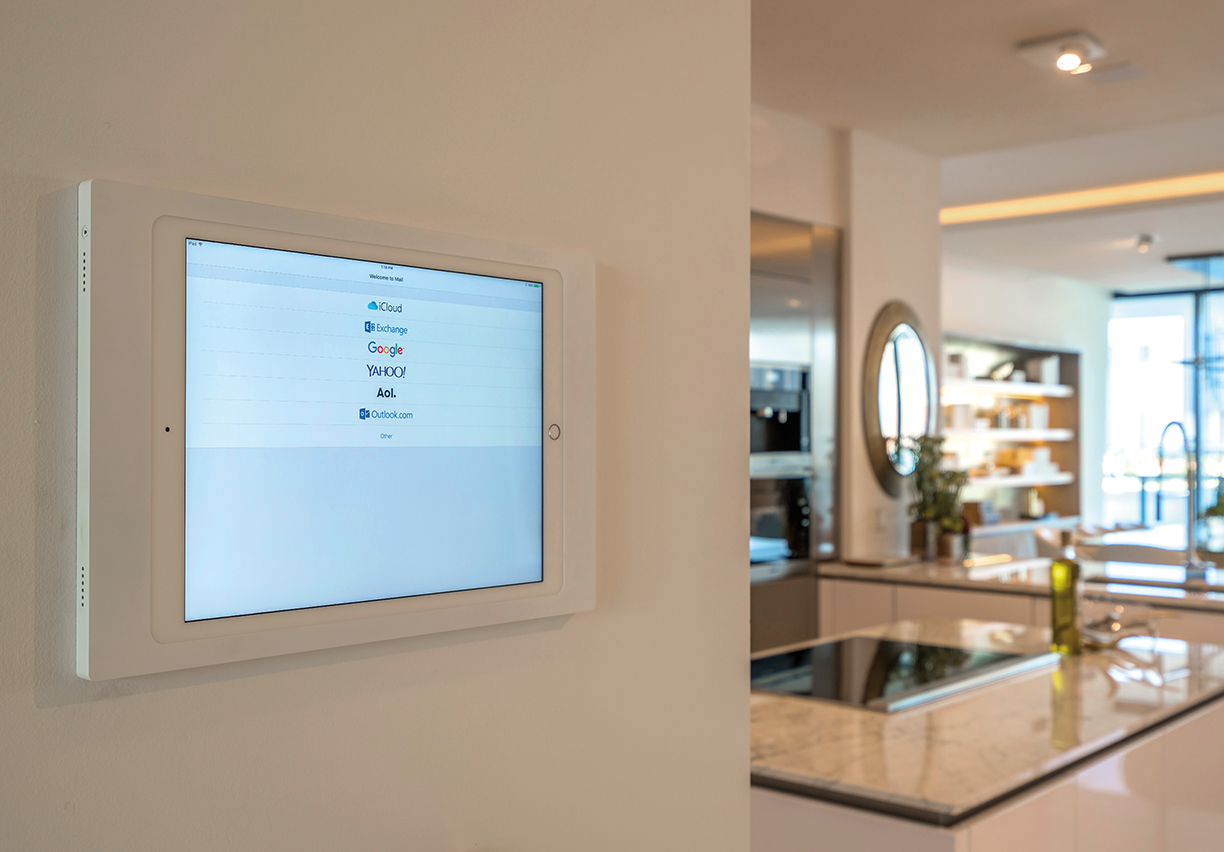
Photo courtesy of Barry Grossman
While this once seemed like the distant future, the rise in smart home technology has made it a reality. It’s 2018, and nearly everything within the home can be controlled with your smartphone — from brewing coffee to adjusting the thermostat. Whether you’re home or not, clocks, speakers, lights, doorbells, windows and appliances can now be controlled automatically from the palm of your hands.
Using Savant Smart Home technology, residents at Residence 2680 can control lighting, climate and security. Meanwhile, the Biometric entry systems allows keyless, fingerprint entry. Residents can even watch TV while showering, as the bathrooms are equipped with in-shower Seura Mirror TVs.
Increasingly, homebuyers are demanding homes with smart technology. Devices like Google Home, Alexa and Amazon Echo are becoming essential household items, which has only increased the movement toward smart homes. In fact, Zion Market Research predicts the smart home market will reach $53.45 billion by 2022, according to Forbes.
At 285 West 110th Street, each resident will have his/her own Amazon Echo for the true feel of living in a smart-home environment. Features can be controlled remotely via a mobile app, including Insteon lighting switches to set the scene, music to greet homeowners when entering and blinds that can be controlled to open and close.
Common areas and residential units at Privé at Island Estates are also equipped with Savant technology, allowing for automated control through any Apple or Android device of all thermostats, audio, visual and window shades.
According to Forbes, 2018 will bring more integration that supports homeowners in 2018 such as an app that reminds you to turn off the lights or to lock the doors, and an alarm that can deactivate upon recognizing your face. Forbes also predicts that technology will become much more efficient, allowing homeowners to control everything from appliances to radio volume from one central location.

Residence 2680 brings the 21st century into the bathroom with an in-shower mirror with a waterproof TV screen.
Photo courtesy of Troon Pacific
Artfully integrating into today’s modern hospitality environments, Sans Hands faucets use electromagnetism to streamline the hand washing process and reduce the spread of disease and bacteria.
By Brielle Bryan

Driven by growing concern over germs and bacteria on restroom surfaces, more hospitality environments are turning to hands-free, automated faucet technology. Sonoma Forge, located in Sonoma County, California, combines craftsmanship and skilled metalwork with its unique line of designer faucets, tub fillers, shower systems and coordinated bath accessories.
Sans Hands, Sonoma Forge’s sensor faucet technology, offers an improvement over outdated infrared technology with its invisible sensors. Sans Hands incorporates an electromagnetic proximity sensor, and is packaged in stylish designs that perfectly fit today’s modern industrial style.



“Rather than relying on old, unreliable infrared technology, Sans Hands allows users to skip the frustration of frantic hand waving and enjoy the stylishly unique bathroom décor,” said Erik Ambjor, president of Sonoma Forge.
Sans Hands faucets use the basic principle of electromagnetism. Simply speaking, the components include a spout, a low-voltage current from an electrical source — either battery or plug-in — and an electronic brain supplying an electromagnetic field to the spout. When a user approaches the faucet, the electromagnetic field is interrupted, which opens and closes the valve.
Sans Hands faucets are handcrafted and assembled by skilled artisans. They also come in wall-and-deck-mount configurations and are available in a wide array of finishes. A suite of coordinating bath accessories, including decorative hardware, towel bars, tissue holders, mirror mounts and more complete the industrial look. The refreshing design options offer homeowners a decidedly masculine sense of style that enhances any setting, whether urban loft, country villa or boutique hotel.
Photo courtesy of Sonoma Forge
Residents at Jackson Park, high-rise luxury rental towers in Long Island City, can now control their lights, television and thermostat from anywhere in the home using Amazon’s Echo Show.

Tishman Speyer, one of the world’s leading developers, owners, operators and asset managers of first-class real estate, has announced an innovative collaboration with Amazon in which the first residents of all 1,871 apartments at Jackson Park, its trio of high-rise luxury rental towers in Long Island City, will receive an Amazon Echo Show complimentary upon move-in.
In addition to receiving a new Echo Show, all Jackson Park residents will also receive a complimentary smart outlet that can link to the Amazon Show device to highlight some of the endless possibilities associated with smart home and voice-activated technology. Tishman Speyer will also equip each of its 120 premium penthouse residences with a full suite of smart home devices certified to work with Amazon Alexa, including electrical outlets, light switches, and thermostats, enabling new residents to control their home simply by asking Alexa.
“With Jackson Park, Tishman Speyer is setting new standards for Long Island City luxury living and amenities,” said Rob Speyer, president and CEO of Tishman Speyer. “We are thrilled to be working with Amazon, the undisputed leader in advanced smart home technology. We are striving for the best possible experience for our residents and this collaboration completes the amenity package at Jackson Park.”
“From making a living space more comfortable to offering entertainment and information, Alexa and Echo devices can improve the experiences we have in our homes,” said Charlie Kindel, the director of Amazon Smart Home. “Smart home control is one of the most popular Alexa features today, and we think Long Island City residents will love using their voice to make life at home easier.”
The Amazon Echo Show features a 7-inch touchscreen and 5-megapixel camera and is powered by Alexa, the cloud-based voice service that can help residents with tasks, entertainment, general information and more. The Echo Show will offer residents voice responses from Alexa that are now enhanced with visuals and optimized for visibility across the room. Residents can call or message their family and friends, get the news with a video flash briefing, see their Prime Photos, shop with their voice, see lyrics with Amazon Music and more.
Once connected to smart devices in the home, Echo Show will also allow residents to control their lights, television, and thermostat from anywhere in the home by linking with any smart home products in the Works with Amazon Alexa program, other Amazon Echo devices and more. Speakers can be grouped as well, creating a multi-room entertainment system seamlessly controlled by voice.
The concept to develop smart-home enabled apartments originated out of Tishman Speyer’s global internal innovation competition known as the Idea Olympics. Launched in 2016, the Idea Olympics challenged junior executives at Tishman Speyer to form teams and develop a concept for an original residential amenity that would revolutionize the way people live. Teams competed through two rounds of competition and the winner of 2016’s competition developed the concept to offer apartments equipped with smart home technology, to be implemented in Jackson Park. Tishman Speyer has taken that idea from this internal competition to market in just one year.
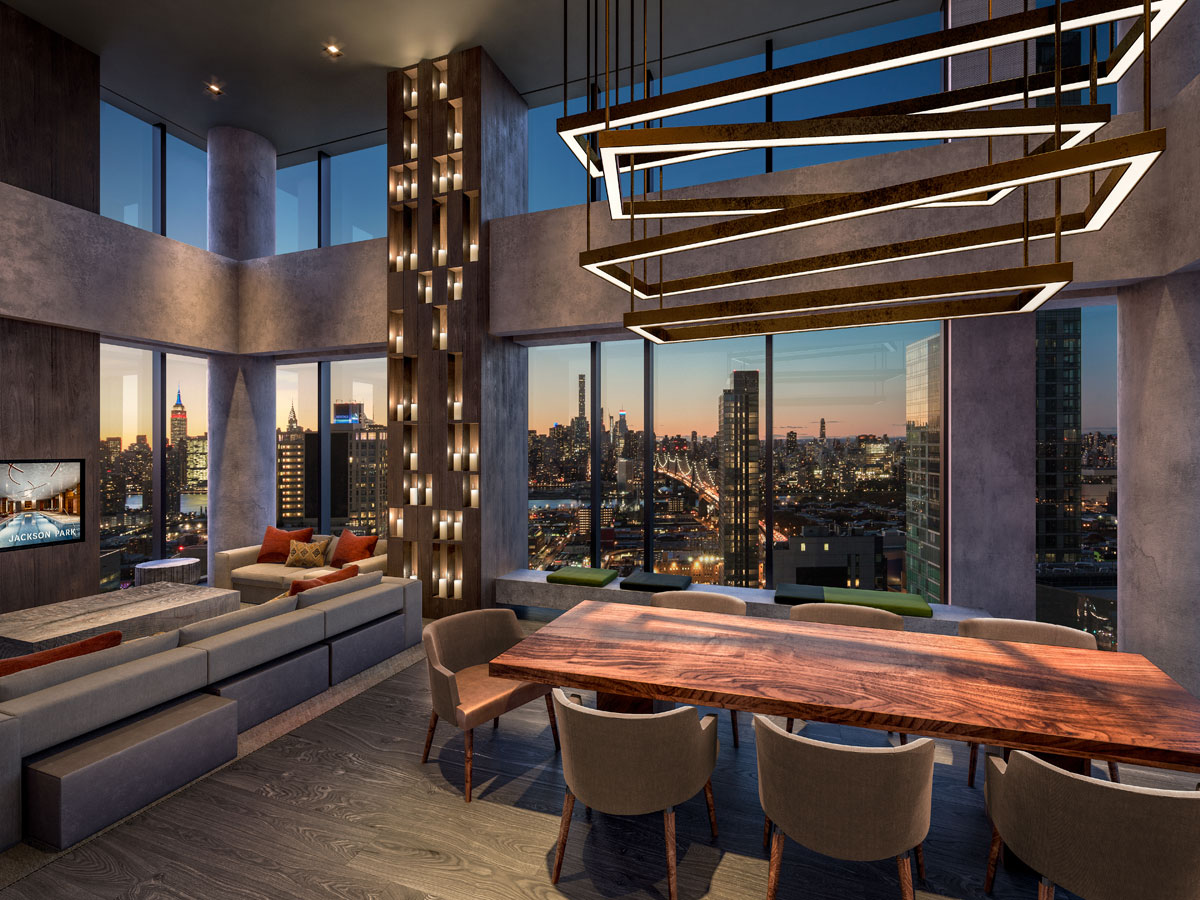


Jackson Park renderings
courtesy of Tishman Speyer.
This article originally appeared in the Spring 2017 Edition of Homes & Estates Magazine.
With an eye toward the future, one of real estate’s most iconic brands boldly remakes its luxury marketing program and unveils a brand-new identity.
By Alyson Pitarre

Versace. Aston Martin. Tiffany. The common thread between all of these brands? Staying power. They have all dared to adapt, to refine the picture of who they are and to lead by continually raising the bar for future generations.
Leadership in luxury real estate does not come easy. Globalization and new technologies have continued to challenge the status quo at the highest price points, while competition has grown even fiercer as the luxury residential sector led the recovery from the Great Recession. In the battle for market share, where new players are entering the picture and existing competitors are continually jockeying for position, the leader always has the most to lose…
CLICK HERE FOR THE FULL STORY AS SEEN IN THE SPRING 2017 ISSUE OF HOMES & ESTATES.
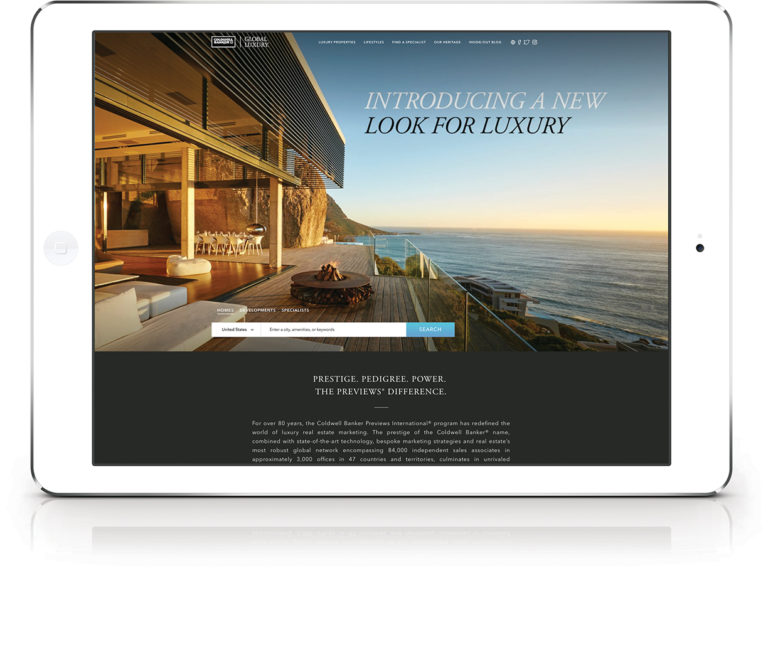
By: Roger Grody
With global competition and technology both accelerating at unprecedented rates, elite real estate agents utilize all resources.
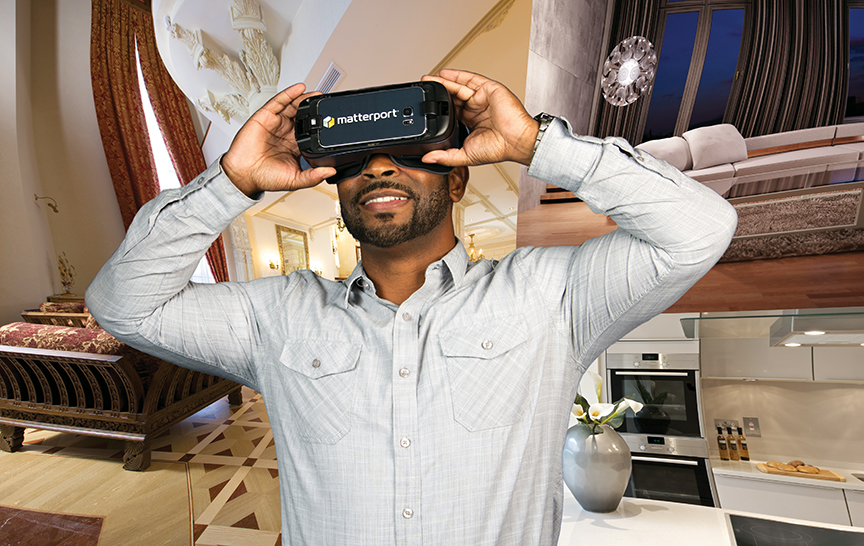
The days when an individual real estate agent with an overstuffed Rolodex and silver tongue could rise to the top of his or her profession have long passed. Today, it takes an entire team of professionals — interior designers, videographers and publicists to name a few — and an arsenal of cutting-edge technologies to compete in the global luxury real estate market. The industry’s elite agents are adapting to a rapidly changing environment in which teamwork and technology play equally important roles.
Technology-Assisted Sales
If this article was written just a few years ago, the greatest emphasis on technology would have been the ability to master online listing platforms and effectively employ social media. Today, those skills are a given, and technological proficiency extends far beyond maintaining a Facebook or Twitter account. Unlike in some industries, where technology threatens to replace the human touch, the real estate agent is in no jeopardy of becoming obsolete. That said, agents who fail to embrace technology will be unable to compete.
The luxury real estate market has become so globalized that it is essential for clients to be able to effectively view a prospective investment without booking an international flight. Elite agents not only concern themselves with product inventory and financial markets, but welcome any technological advance that can give them better field position.
Arguably the most significant advance in presenting listings, beyond an attractive set of photographs or traditional video tour, was a persuasive three-dimensional tour of a property developed by Silicon Valley-based Matterport in 2014. The Luxury Home Marketing provides advanced training for luxury real estate agents and offers prestigious certifications such as Certified Luxury Home Marketing Specialist (CLHMS) and Million Dollar Guild, the latter recognizing members who have demonstrated sustained performance in the million dollar market.

Kevin Rochlitz, the Institute’s education and development director, explains, “We offer the tools to help elite agents better position themselves and get the results that luxury clients expect,” he states, citing both technology and teamwork. While the Institute’s sophisticated databases assist members in matching unique properties with suitable buyers, surrounding oneself with talented people is an essential part of effective marketing, acknowledges Rochlitz.
“We advise agents to look for top-level service vendors to offer all the specialties their clients might need,” referencing professionals such as interior designers for staging or drone technicians for exceptional videography. “It’s essential to have well-known architects, antique dealers and restoration specialists in your database,” says Rochlitz. “If you’re showing a client a property with a hand-carved ceiling, you need people in your portfolio that can tell you if it’s possible to restore and at what cost,” he illustrates.
Rochlitz believes agents must not only keep up with technology, but also know when and how to introduce it into the client relationship. A fan of Matterport presentations, virtual staging and elaborate mini-movies that showcase the lifestyle provided by an extraordinary property, Rochlitz insists demographics play a role. “Baby boomers and Gen Xers are technology-savvy but still like to browse through magazines, while millennials want to do everything online,” says the director.
The philosophy promoted by the Institute results in elite agents who not only process real estate transactions, but are capable of advising clients on a wide range of issues affecting their quality of life. Because international economics, architecture and design, entertaining, and art all come into play with luxury client interactions, an agent’s life outside the real estate office is definitely relevant.
“It’s all about where they’re seen,” says Rochlitz of the most successful agents. “In some markets the Junior League is a big deal, other places it’s the country club or polo club, but in all markets the best agents sit on boards of charitable organizations,” he reports. Charities provide an effective way for agents to expose themselves to luxury clients, explains Rochlitz, while in the process serving their communities.

New York interior designer Drew McGukin is part of the luxury real estate ecosystem and maintains strong symbiotic relationships with the city’s top professionals. “Brokers rely on me for expertise on lifestyle and design the way their clients rely on them for expertise on pricing and resale value,” says the designer, who explains, “They understand I provide an added layer of service.”
McGukin, who applies modern, but inviting aesthetics to some of Manhattan’s best addresses, observes that premier agents, who are exposed to hundreds of living spaces, are quite design-conscious. “To be a broker you’ve got to have a natural interest in architecture and design, and I’m always impressed with the ideas they bring to the table,” says McGukin. He is frequently consulted by agents about the cost and feasibility of design projects and accompanies clients to viewings or evaluates virtual tours they send him. Trusting his judgement, repeat clients typically ask McGukin questions such as, “Will this apartment suit my family’s lifestyle?” or “Will there be enough space for my art?”
McGukin utilizes various software applications in his practice, but the young designer still insists on some old school touches. “One negative of technology is its lack of warmth, so sometimes I’ll start with a computer-assisted image, then wrap it with sensibility and softness by hand-sketching over it, providing a sexy result,” says McGukin. He adds, “When you’re selling a dream, there’s got to be some pizazz,” a philosophy shared by many elite agents.
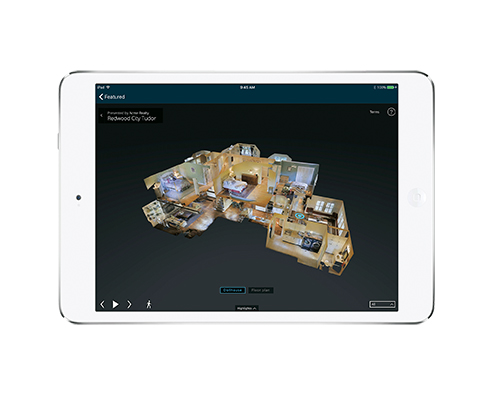
Home stagers are another essential part of the elite agent’s team of specialists, as effective staging can add a significant premium to the selling price of a luxury property. With a celebrity clientele and extensive experience as an interior designer, Los Angeles-based Meridith Baer is one of the most prominent stagers in the nation. “Selling real estate is about selling a lifestyle,” she contends.
Noting that the first introduction of a home often occurs online, Baer says, “Photos and videos of elegantly staged homes are more likely to capture buyers’ imaginations, igniting the passion to then visit the property.” She suggests the best staging not only dazzles, but conveys warmth and comfort, explaining, “The home that sells first is the one that speaks to the buyer’s heartstrings, makes them fall in love at first sight.”
Baer reports that elite agents understand the value of her expertise, and maintains staging can
increase the sales price by 20 percent and the speed of sale by 80 percent. “Expert staging demystifies how a room might lay out and be lived in, so affluent buyers can easily and effortlessly see themselves living there,” explains Baer.
Long before VR or AR were even vague concepts, effective photography was one of the greatest marketing tools available to luxury real estate agents, and skilled photographers continue to get homes sold. South Florida-based architectural photographer Dana Hoff, accustomed to shooting luxury residential properties, asserts that whether images are presented in a magazine or incorporated into a digital platform, the quality of photography is critical. “You have just a couple seconds to grab someone’s attention and get them to want to learn more about the property,” he says.
Hoff explains that real estate photography is a unique, highly technical specialty that a photographer skilled in shooting weddings or products cannot easily transition to, and believes sophisticated real estate agents recognize the value of his expertise. While working in Los Angeles, the photographer became a trusted collaborator with top-flight agents whose listings included $30 million estates in Beverly Hills and Bel-Air.
Reporting it was not unheard of to spend $10,000 for floral arrangements on the day of a shoot, Hoff maintains, “The elite agents understand the power of presentation.”
Photos courtesy of Matterport, RoOomy, and Meridith Baer
Usually viewed as the nemesis of brick-and-mortar shops, technology is now being employed by retailers to draw people back to the mall.
By Roger Grody
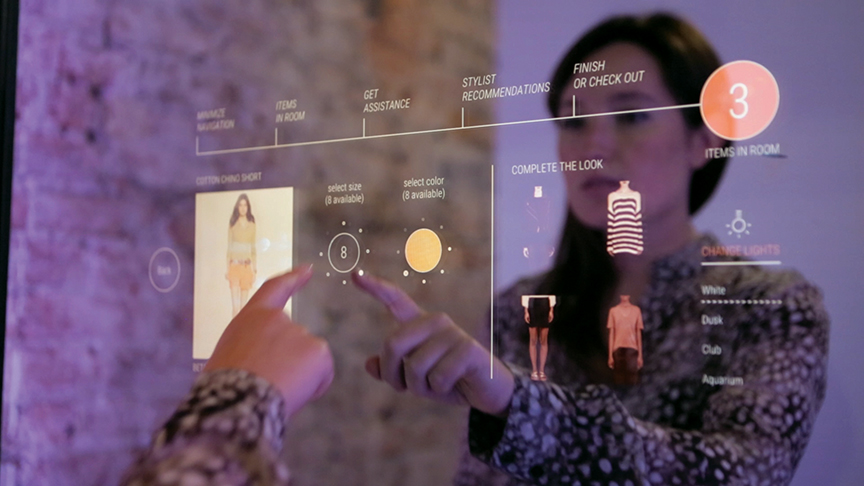
With RFID technology, fitting rooms become interactive. Photo courtesy Oak Labs.
Adjusting to a fundamental shift in how the world shops, retail establishments are struggling to retain customers who have become accustomed to shopping online in their pajamas, or while sipping a latte at their neighborhood café. To get people back to the mall, retailers must offer a more compelling experience, and for some, technology is not the enemy, but the answer.
Fashion designer Rebecca Minkoff, who parlayed a flirty “downtown romantic” style into a global lifestyle brand, is also one of the most technologically ambitious retailers. At her boutiques in New York, San Francisco and L.A., the experience begins at a large touchscreen from which customers can order cappuccino or Champagne, delivered to them as they browse.
At her boutiques, Minkoff has also introduced technology to the dressing rooms, equipped with mirrors doubling as interactive touchscreens that allow customers to adjust the lighting and request alternate sizes or styles. In addition, the “smart mirrors” detect the radio-frequency identification (RFID)-tagged garments and suggest matching pieces or accessories. “The amount of embedded tech that has gone into this retail embodiment has given us the opportunity to reach our ultimate goal in catering to next-generation shoppers,” says Uri Minkoff, the designer’s brother and company CEO.
Burberry, the iconic British luxury brand, also has demonstrated a strong commitment to technology, first at its global flagship store on London’s Regent Street and subsequently at its Shanghai flagship, the largest of seven locations in that city. The illumination of the sleek Shanghai façade changes with the natural light, while 40 strategically placed video screens and 130 speakers reinforce a decidedly high-tech interior.
Using RFID technology, a multimedia experience is triggered every time a customer steps into a dressing room at Burberry Shanghai. Not only are mirrors transformed into video screens — displaying images from a Parisian fashion show, for instance — but product specs and other relevant information are also presented to the customer.
William Toney, vice president of global RFID market development at Avery Dennison, a leader in the field, reports retailers are rapidly embracing this technology. His company manufactures tiny ultra-high-frequency RFID antennae with integrated chips that are adhered to price stickers or sewn-in labels, unnoticed by shoppers.
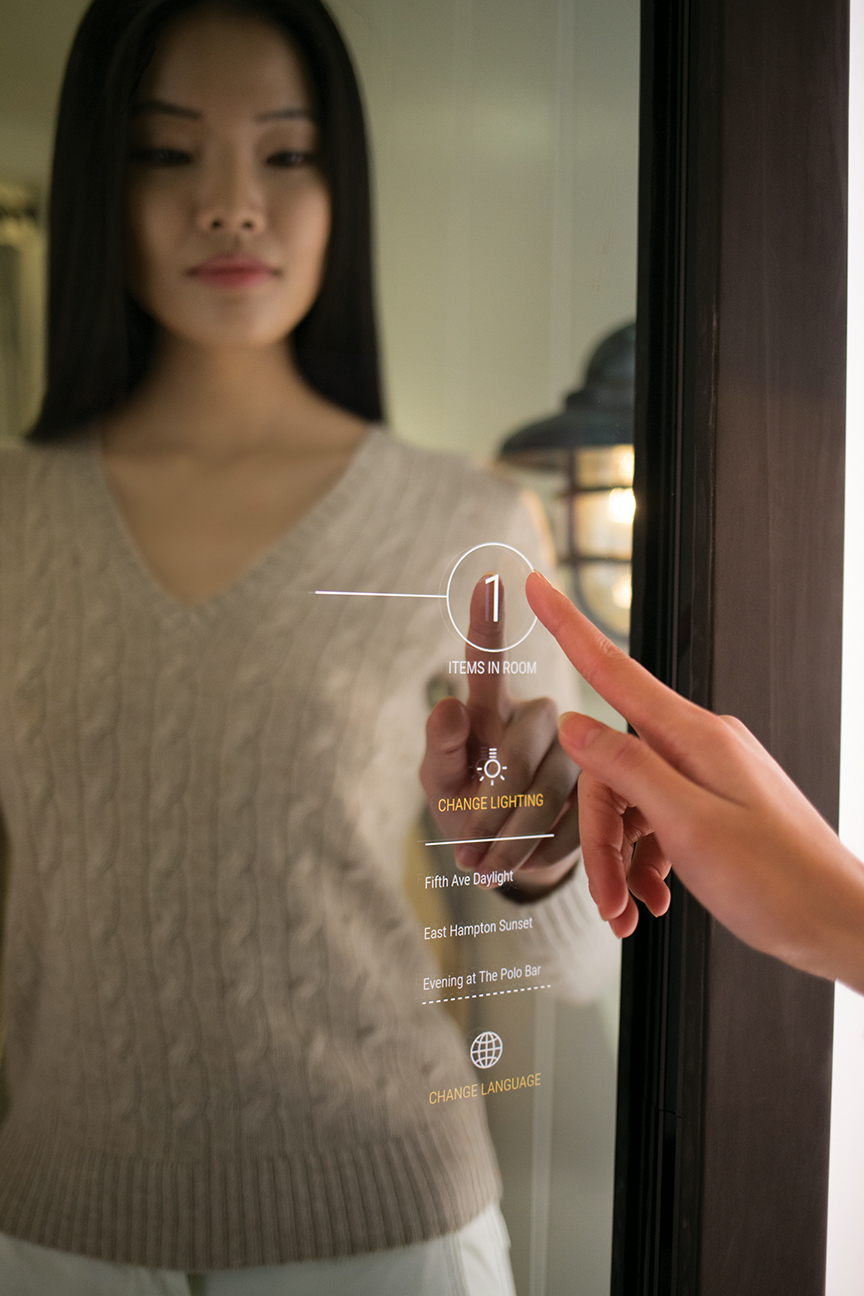
Oak Labs’ smart mirrors transform shopping at Ralph Lauren boutiques. Photo courtesy Oak Labs.
These stickers, which can be scanned from a distance, have revolutionized retail inventory management. Recognizing that customers’ greatest frustration is not being able to find what they’re looking for, retailers welcome the opportunity to increase inventory accuracy from an industry average of 65 percent to 95-plus percent, explains Toney.
By collaborating with high-tech companies like Oak Labs, Avery Dennison’s RFID tags can trigger the interactive experiences pioneered by Rebecca Minkoff and Burberry. “Retailers are beginning to realize the definition of ‘mobile’ is quickly moving away from mobile apps and towards a reality where patrons keep their heads up as the store changes around them,” says Oak Labs CEO Healey Cypher, whose full-length touchscreen mirrors are live at selected Ralph Lauren stores.
“Without anybody having to scan anything, a garment comes to life in the dressing room,” says Toney, who explains the mirror identifies what the customer has brought in and gives her or him an opportunity to interact with the store’s resources. “The greatest contribution of this technology is that it elevates the shopping experience for the consumer,” he maintains.
At its stores in New York, San Francisco and London, outdoor apparel and equipment retailer The North Face offers customers a virtual reality (VR) experience through a collaboration with Jaunt, a Silicon Valley startup. The content, filmed with Jaunt’s proprietary cameras and microphones, provides a fully immersive experience of trekking in Nepal with professional rock climber Renan Ozturk.
“Virtual reality is a powerful medium that has the ability to introduce audiences to incredible people in amazing places,” says Cliff Plumer, president of Jaunt Studios. For The North Face, VR represents an innovative way to share its passion for the outdoors and inspire customers to equip themselves for new adventures.
On The Web
Burberry: www.burberry.com
Ralph Lauren: www.ralphlauren.com
Rebecca Minkoff: www.rebeccaminkoff.com
The North Face: www.thenorthface.com
Avery Dennison: www.averydennison.com
Jaunt: www.jauntvr.com
Oak Labs: www.oaklabs.is
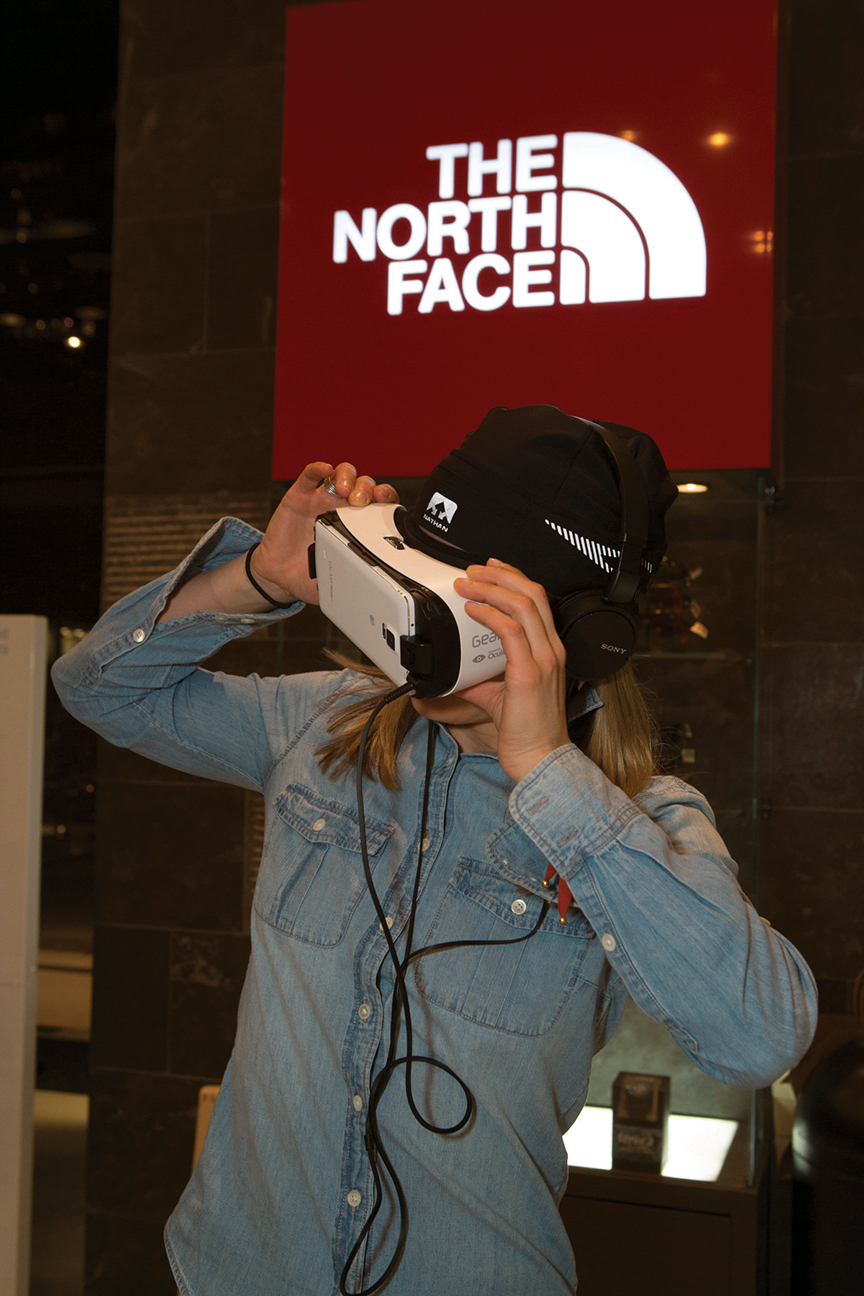
At The North Face, virtual reality transports customers to Nepal; Photo courtesy The North Face.


